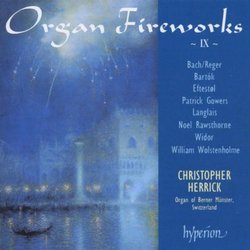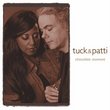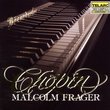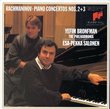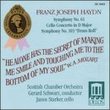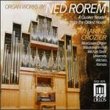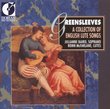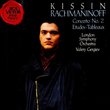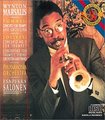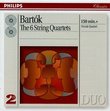| All Artists: Patrick Gowers, Bela Bartok, Max Reger, Sverre Eftestol, Jean Langlais, William Wolstenholme, Noel Rawsthorne, Charles-Marie Widor, Christopher Herrick Title: Organ Fireworks, Vol. 9 Members Wishing: 1 Total Copies: 0 Label: Hyperion UK Release Date: 9/11/2001 Album Type: Import Genre: Classical Styles: Chamber Music, Forms & Genres, Suites, Historical Periods, Classical (c.1770-1830), Modern, 20th, & 21st Century Number of Discs: 1 SwapaCD Credits: 1 UPC: 034571172286 |
Search - Patrick Gowers, Bela Bartok, Max Reger :: Organ Fireworks, Vol. 9
CD DetailsSimilarly Requested CDs
|
CD ReviewsWinning Combination: Fine Music, Great Organ, Excellent Orga James Yelvington | USA | 12/20/2005 (5 out of 5 stars) "
This CD is ninth in the Organ Fireworks series, which Hyperion Records initiated in 1984 to highlight a wide variety of excellent organ music as performed on an equally wide variety of excellent organs throughout the world by the talented Christopher Herrick. On this CD Mr. Herrick plays the very fine Kuhn organ of the Bern Cathedral in Switzerland to present a program of largely 20th century music, about half of which will likely be unfamiliar to the average classical (even organ) music listener. (For that reason I'll offer remarks about the individual pieces.) "An Occasional Trumpet Voluntary", by Patrick Gowers (b. 1936) begins the program. Gowers, perhaps better known for film and TV scores, supposedly offers a reworking of Jeremiah Clarke's well-known "Trumpet Voluntary," but frankly I didn't catch anything much of that piece here. I heard a rather flashy, syncopated toccata which suggested minimalism in its repetitive figurations over polytonal chords and bass motives. Nonetheless I enjoyed it for its colorful sounds, lively rhythms, and overall musical appeal. Tracks 2-7 give us Herrick's own arrangement of Bela Bartok's familiar "Romanian Dances." The dances are full of genuine folk character, peppy rhythms, great instrumental color, and occasional tender melancholia. Kudos to Herrick for the fine arrangements and excellent finger/footwork! The J.S. Bach "Chromatic Fantasia and Fugue in D Minor" (BWV 903), as arranged for organ by Max Reger (1873-1916), occupies tracks 8-9, and will naturally be known to many Bach-lovers, though not necessarily in this guise. The fantasia is a very virtuosic, free-wheeling romp of the musical imagination, exploiting every nuance of both instrument and thematic material. The fugue is a fascinating masterpiece of baroque counterpoint which builds inevitably toward the powerful, climactic close which our ears find so very satisfying. Tracks 10-16 comprise the "Seven Allegorical Pictures" by Sverre Eftestol (b. 1952) based on the Norwegian folktune "Kling, no klokka" ("Sound the Bell"). The pieces are short, very coloristic, varied, almost neo-Impressionistic characteristic music, with the theme quite hidden, except in the final movement. I found this totally unfamiliar music by an equally unfamiliar composer to be very enjoyable listening, despite some initial doubts. The much-loved "Trois Paraphrases Gregoriennes," Op. 5, by Jean Langlais (1907-91) needs little comment, but I do want to call attention to how well this music of pious, French, Christian mysticism comes across on the Swiss organ located in a Germanically-oriented canton. (Langlais himself played the Cavaille-Coll at Sainte Clotilde, Paris, from 1945 to 1987.) Some may find this music faintly reminiscent of Respighi's "Pines of Rome," which also employs chant or chant-like themes to evoke the aura of the Roman church. Track 20 is the "Bohemesque" by William Wolstenholme (1865-1931), written for the opening of the Johannesburg [South Africa] Town Hall organ in 1916. It is described as a scherzo with two trios. The main theme is bright, sunny, and rhythmic; the trios are less extroverted, but keep things moving along toward the strong coda which brings all to a fine, affirmative close. Noel Rawsthorne's (b. 1929) "Line Dance" from his "Dance Suite" was inspired by the dance spectacular "Lord of the Dance" and accordingly begins with a quotation of that tune (also known as the Shaker tune "Simple Gifts"). This infectiously good-humored and lively dance music clearly shows how Rawsthorne manages to keep Kipling's "common touch" in much of his musical output: no one will have difficulty appreciating this piece, which touches on quite a few familiar tunes. What fun! The final track (22) offers the ubiquitous "Toccata" movement from the Fifth Symphony of Charles-Marie Widor (1844-1937), which is the only pre-twentieth century piece here (1879) besides that of Bach-Reger. Because of its great familiarity it permits us to make comparisons of both organ and organist with numerous others who have recorded the piece. My conclusion from this is that both organ and organist do a very convincing and cleanly executed job on this active, exciting piece, which has taken on a life of its own apart from the symphony which engendered it. The generous liner notes, by Stephen Westrop, provide very helpful comment upon the works presented. One quibble though: when on page 2 discussing Bartok he says the family were in "straightened circumstances" he obviously means "straitened." In conclusion, I can recommend highly this selection of varied and enjoyable organ music as played upon an excellent and interesting instrument by an able, talented, and imaginative artist. " |

